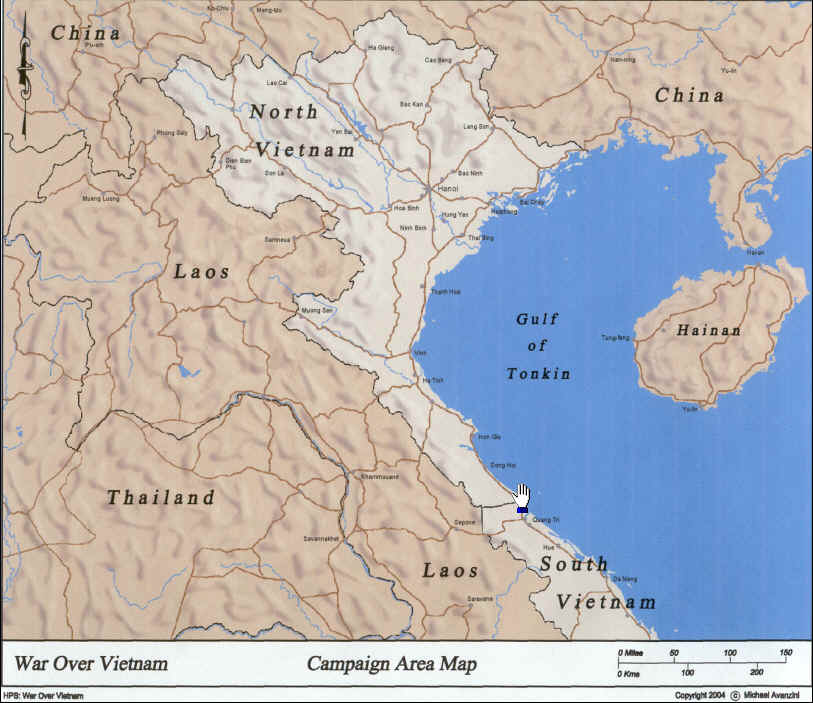Modern Air Power – War Over Vietnam – Game Review (PC)
Graphics/Audio – 3 stars
I said as easy on the eyes as Alyssa Milano, not as gorgeous as she is.
There’s no eye candy here; no exploding aircraft or precise 3D shots so good you can read the pilots’ name and callsign. All missiles fired, whether it’s an AIM-9 or a SAM, are simply rendered as a black pixel. Since all the combat takes place over the skies of Vietnam, there’s only one rather bland map.
As I’ve said many times before, though, I’m not one to get hung up on pretty game graphics, and I don’t think the lack of said graphics detracts at all from the gameplay. Well, maybe the missiles could’ve actually looked like missiles.
{default}Combat is never pretty, anyway.
During my Army air defender tour of duty, we trained extensively in conjunction with Army aviators, especially by listening to their radio communications amongst themselves. Someone somewhere in developing War Over Vietnam thought it would be a nice touch to add similar traffic to the games’ soundtrack, and they were right. Though it’s a short sound file (I had it memorized by the time I had played halfway through the game), it does an excellent job of seemingly placing you in the action of each of your aircraft.
Interspersed amongst this radio traffic are missile firing sounds, the roar of jet engines, the chop of propeller blades, and the distinctive warning sirens of a SAM launch. All well done.
AI – 3 stars
This is not a major concern in war games of this genre, so there are not many options here. You can play as either the Americans or the NVA, with or without the fog-of-war, or just set both sides to Automatic and watch the computer battle itself. Good little training mode, that is.
A few other settings available include having your aircraft drop their ordnance if attacked by SAM or by another aircraft, crashing aircraft low on fuel at the end of a scenario, and automatically placing downed crew markers on the map when so needed.
<="" />
AI tweaks from the command menu allow you to set whether an aircraft auto-fires on targets, auto-intercepts enemy aircraft, and auto-returns after reaching ?bingo’ (low fuel) or ?winchester’ (no ammo) status. SAM settings simply activate or deactivate them, and toggle the auto-fire mode.
You aircraft won’t do anything unless commanded; or, if left alone, they will continue to do what they were doing unless given a new command. For instance, patrolling support aircraft will continue to patrol until they run out of fuel (unless set to auto-return), and will not even take evasive actions when attacked. Make sure they have a fighter escort nearby. Once a flight reaches the end of its path, it will simply stop and circle over that location. And to reiterate an earlier warning, beware of setting your aircraft to auto-return; they set their own path straight to the friendly base from which they came, a path that just may have them flying over enemy SAM’s.
I’ll say it again: beware Auto-Return!
Multiplayer – 3 stars
War Over Vietnam uses Microsoft’s Direct Play to connect via TCP/IP for network gaming, and it’s rather a unique affair. Once computers are connected, the Host computer can set up an encryption key that will keep opponents from looking at the battle file. Another nice touch is the ability to have more than one player on each side.
The first players to join per side are the Commanders, and each Commander can set up another commander (player) according to the number of available organizations under his command. The Commander may send his subordinates orders and can control only the aircraft not within an organization under the command of his subordinates. All this is further explained in detail in the Users Manual.
Historical Context – 5 stars
The historical information packaged with War Over Vietnam makes an excellent resource for this type of new game genre. In fact, I think this actually eclipses the gameplay, and is worth getting the game just for this info.
Each mission has an excellent historical description in the File Selection Dialog box, telling an account of the actual mission, and giving players hints and tips on how best to succeed in the mission.
Believe you me, you’ll be very glad for all the help you can get when faced with something like this!
From in-game, hitting the F3 key will bring up the Database Dialog of the missiles used in War Over Vietnam, and where you can learn what the role of certain ordnance is (air-to-air, air-to-ground, surface-to-air, etc). Also found here are details on the 118 aircraft used in the game. The F4 key brings up the Modern Air Power Users Manual, where you’ll find excellent primers on firing, air-to-air missile attributes, proper ordnance to be used on ground targets, and aircraft roles and features.
Located on the game CD as Help files and Word documents, you’ll find a wealth of information that bridge military history and features used in gameplay. The best example of such is the inclusion of Chapter IV from The Air War Against North Vietnam from The United States Air Force in Southeast Asia, 1961-1973 by the United States Air Force, 1984. In just over nine pages, this details the air war above Vietnam, from the August 1964 attack on the USS Maddox through to the January 1973 cease-fire. Excellent reading, indeed.


